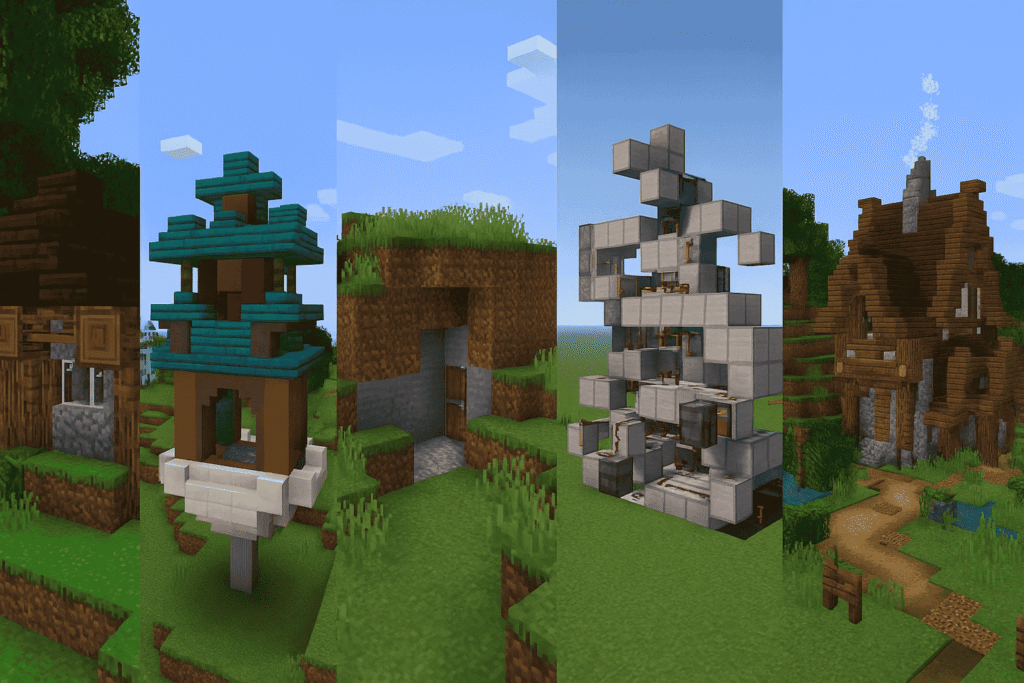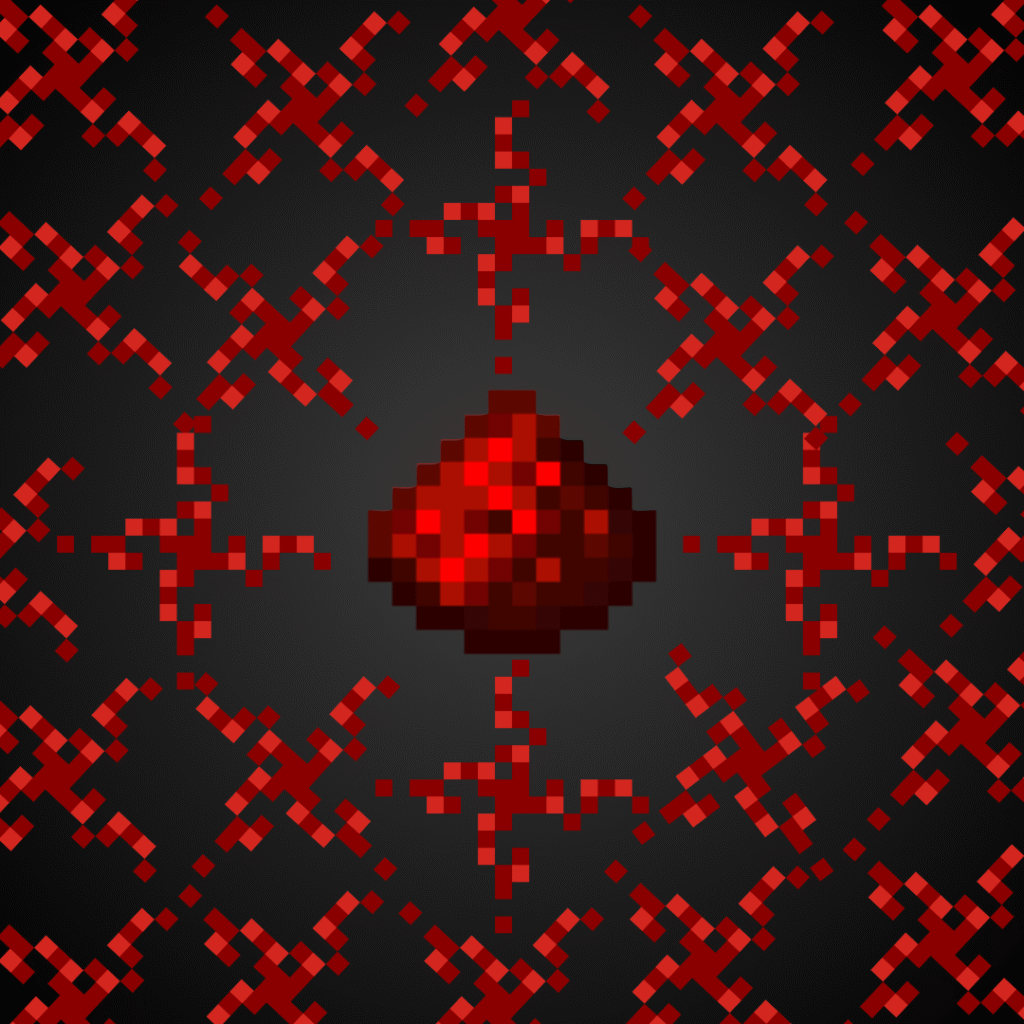The Psychology Behind Minecraft
Not just a game. An emotional canvas that reflects who we are and how we think.
Minecraft isn’t just a game, it’s a creative universe. Whether it’s an elegant medieval castle or a wild dirt shack suspended over lava, every structure in Minecraft tells a story. But what drives us to build what we build? What are the mental and emotional mechanics behind those blocks?
This post dives deep into the psychology of Minecraft building: why we choose certain styles, how personality and mood influence our virtual worlds, and what these digital constructions reveal about who we are.
The Blank Canvas Effect
Every Minecraft world begins the same way: vast, empty, untouched. For many players, this blank slate triggers what’s known as the Blank Canvas Effect. Psychologically, a clean canvas is both exciting and overwhelming. It taps into the human desire for agency, the feeling that we have control over a world that can become anything.
This sense of limitless potential is empowering. It’s no coincidence that many players begin by creating something familiar, a simple house, a base, a shelter. This mimics our real-world instincts for safety and survival. But from there, things start to reflect the deeper parts of our minds.
This post dives deep into the psychology of Minecraft building: why we choose certain styles, how personality and mood influence our virtual worlds, and what these digital constructions reveal about who we are.

Creativity and Cognitive Flow
One of the biggest psychological draws of Minecraft is the state of flow, a concept coined by psychologist Mihaly Csikszentmihalyi. Flow is the mental state where you become so immersed in an activity that time seems to vanish. In Minecraft, this often happens during long building sessions.
Why? Because the game meets all the conditions for flow:
-
Clear goals: You know what you want to build (a base, a castle, a redstone elevator).
-
Immediate feedback: Place a block—you see the result instantly.
-
Balanced difficulty: You’re challenged, but not overwhelmed.
Building in Minecraft, especially in creative mode, becomes meditative. The repetition of placing blocks, aligning structures, and tweaking details creates a rhythm that many compare to real-world artistic practice.
This sense of limitless potential is empowering. It’s no coincidence that many players begin by creating something familiar, a simple house, a base, a shelter. This mimics our real-world instincts for safety and survival. But from there, things start to reflect the deeper parts of our minds.
This post dives deep into the psychology of Minecraft building: why we choose certain styles, how personality and mood influence our virtual worlds, and what these digital constructions reveal about who we are.
Personality Types and Building Styles
Have you noticed how some players always build cozy cabins while others obsess over technical redstone machines? It’s not random. Studies in game psychology show a strong connection between personality traits and in-game behavior.
Here’s how different types of people tend to build:
1. The Planner (Analytical, Detail-Oriented)
Loves symmetry and functionality.
Builds cities, transport systems, and structured layouts.
Uses spreadsheets and sketches before building.
2. The Artist (Creative, Expressive)
Explores texture, shape, and unique block combinations.
Builds floating temples, abstract sculptures, or pixel art.
Doesn’t care about efficiency—focus is on aesthetics.
3. The Survivalist (Practical, Focused)
Builds compact, resource-efficient shelters.
Often plays in Hardcore or Survival.
Prioritizes farms, tools, and defensive structures.
4. The Engineer (Technical, Curious)
Obsessed with redstone, automation, and logic gates.
Builds calculators, elevators, and sorting systems.
Treats Minecraft as a digital engineering lab.
5. The Storyteller (Narrative-Driven)
Builds villages with backstories, themed worlds, or RPG maps.
Constructs entire histories and mythologies in-game.
Sees every structure as part of a living story.
These types aren’t rigid—most players are a blend. But understanding your own tendencies can help you tap deeper into why Minecraft feels so personal.
Why? Because the game meets all the conditions for flow:
Clear goals: You know what you want to build (a base, a castle, a redstone elevator).
Immediate feedback: Place a block—you see the result instantly.
Balanced difficulty: You’re challenged, but not overwhelmed.
Building in Minecraft, especially in creative mode, becomes meditative. The repetition of placing blocks, aligning structures, and tweaking details creates a rhythm that many compare to real-world artistic practice.
This sense of limitless potential is empowering. It’s no coincidence that many players begin by creating something familiar, a simple house, a base, a shelter. This mimics our real-world instincts for safety and survival. But from there, things start to reflect the deeper parts of our minds.
This post dives deep into the psychology of Minecraft building: why we choose certain styles, how personality and mood influence our virtual worlds, and what these digital constructions reveal about who we are.

The Role of Escapism and Control
Minecraft isn’t just a creative outlet, it’s a form of escape. During tough times, players often turn to the game to regain a sense of control. In a world where real-life events can feel chaotic, Minecraft offers a safe haven with simple rules:
If you build it, it stays.
You can fix your mistakes.
You control the pace.
This gives players a sense of predictability and mastery, especially important for those struggling with anxiety or stress. Even the act of tidying up a messy build or organizing a chest room can have calming, therapeutic effects.
Redstone: The Psychology of Problem-Solving
Let’s talk about the redstone community. What drives people to spend hours building fully-automated tree farms, TNT cannons, or working computers inside Minecraft?
The answer: intrinsic motivation.
Redstone appeals to people who love puzzles, logic, and discovery. It triggers the same brain regions involved in mathematics, programming, and engineering. Every working redstone machine brings a deep sense of accomplishment—it’s like solving a complex riddle that rewards you with digital functionality.
And because there’s no single way to build anything in redstone, it constantly encourages experimentation. Trial and error become part of the fun.

Why Destruction Happens Too
For every brilliant builder, there’s someone who griefs, burns, or blows up. Why?
Destructive behavior in Minecraft can stem from:
Curiosity: Testing what happens when lava is poured on wood.
Frustration: Rage-quitting and deleting worlds.
Power play: Feeling control by ruining others’ builds.
Interestingly, most griefers are younger players. As people mature, they begin to appreciate creation over destruction. The urge to “blow things up” gets replaced by the desire to “make something cool.”
Final Thoughts...
Minecraft may look like a game about blocks, but it’s really a game about people. Every build is a glimpse into a player’s mind. Why do we create what we do? Because every block is a choice, and every choice tells a story.
So next time you log in and start building, ask yourself:
What am I really building here?
It might be more than just a base, it might be a reflection of you.
